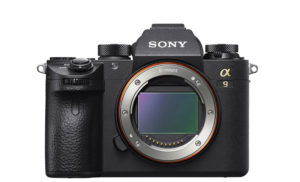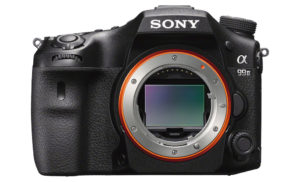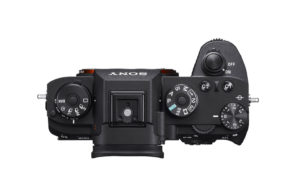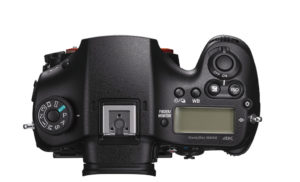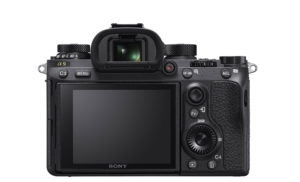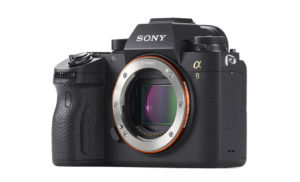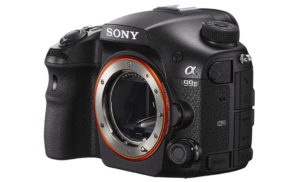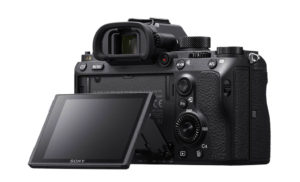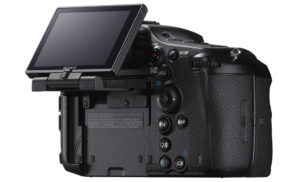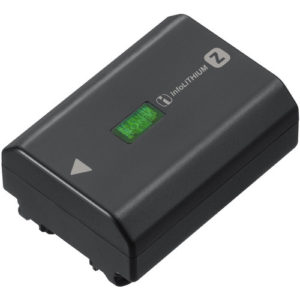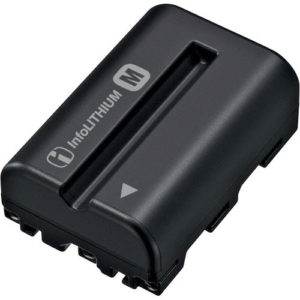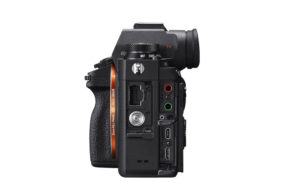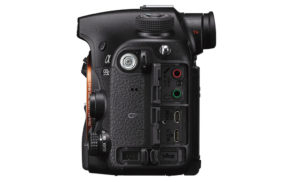We usually stick to mirrorless products on this website but today we decided to make an exception since some are already calling the Sony a9 a true “DSLR killer”. Granted, this statement might be an expression of enthusiasm more than anything else, as we have yet to see how this camera performs in the so-called real world, but there’s no question Sony is targeting sports photographers who have been long-time Canon or Nikon shooters.
But before thinking about the red and yellow brands, why don’t we take a look at how the a9 compares to Sony’s own DSLT system, and more specifically, the recently announced a99 mark II?
The a9 is Sony’s flagship full-frame mirrorless cameras that boasts 20fps with continuous AF and a new autofocus system with 693 phase detection points. The a99 II is the latest flagship DSLT A-mount camera from Sony and combines the best of both worlds: it inherits the 42MP BSI sensor of the A7r II, the latest translucent mirror technology and 12fps continuous shooting capabilities with full-sized RAW files.
These two flagships definitely have some characteristics in common like the sensor size, 4K video and 5-axis stabilisation (with only a 1/2 stop difference in compensation by CIPA standards) but as you can imagine, there are many differences worth noting. So, how do these two Sony’s full-frame flagship cameras compare? Let’s find out!
Sony A9 comparison previews:
A9 vs A7r mark II – A9 vs A7s mark II – A9 vs A7 mark II – A9 vs a6500 – A9 vs X-T2
Electronic shutter evolution – A9 and OM-D E-M1 II
Ethics statement: The information found in this article is based on the official specifications available on the Sony website. We were not asked to write anything about these cameras, nor were we provided any compensation of any kind. Within the article, there are affiliate links. If you decided to buy something after clicking the link, we will receive a small commission. To know more about our ethics, you can visit our full disclosure page. Thank you!
1. Size and design
The first obvious difference is the size and weight. The a9 has a very similar design to the A7 series, albeit with a few tweaks to the button and dial layout. The a99 II has a more rounded shape, and is larger and heavier because of its DSLR design.
The a9 has the advantage of being lightweight (849g vs 673g) and is smaller in terms of height (almost 1cm less) and depth (1.3cm less). Because of its larger size, the grip of the a99 II is taller and larger than the one found on the a9.
We can notice that the a99 II has a monochrome LCD Panel on top that displays the most important information and settings, as well as dedicated buttons for WB, ISO, drive and exposure compensation just like the average high-end DSLR camera. It also has a front multi controller dial that you can use to quickly command aperture, ISO and other settings.
The rear of the two cameras doesn’t look too dissimilar though. Both feature an AF Joystick, a movie recording button near the viewfinder and an exposure dial, amongst other things. The a9 has an additional control wheel and more custom buttons, with two on top and two on the rear. (Note that the other buttons on both cameras can be customised.)
2. Mount and lens selection
Unlike the a9, the a99 II is not a mirrorless camera. The translucent mirror it houses requires more space inside which results in more distance between the sensor and the mount. As a result, the two cameras come with a different mount system and different lenses.
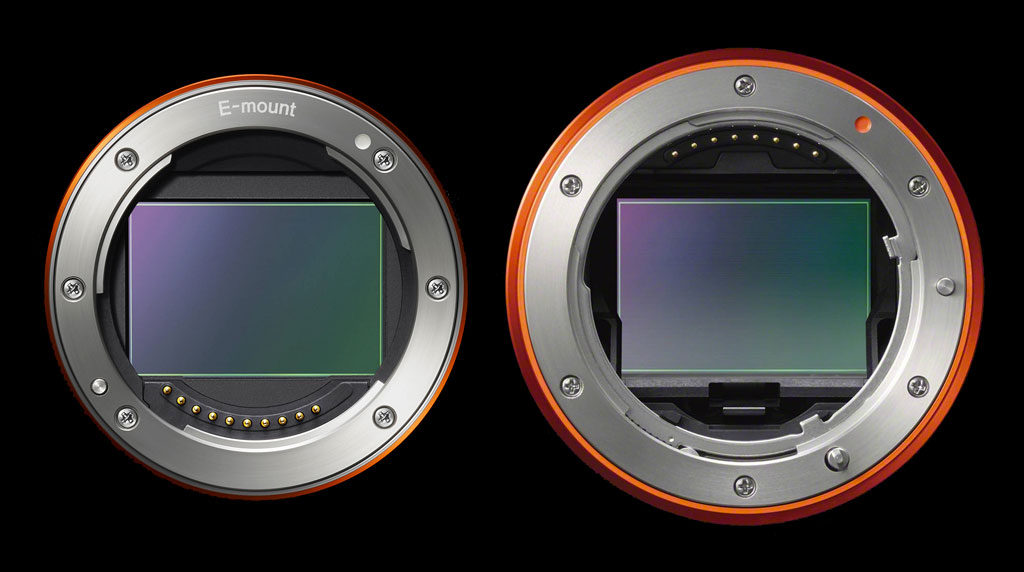
The a9 features the E-mount which is found on all Sony mirrorless cameras – APS-C and full-frame – and also on some of its professional camcorders. The distance between the mount and the sensor is 18mm. This short distance allows the camera to be used with several third-party lenses via an adapter, which from day one has been one of the main strengths of the E-mount system, especially after the 35mm format cameras were released.
The a99 II features an A-mount which Sony has been using since it released its first DSLR in 2006. The Alpha mount was inherited from Minolta after the Japanese corporation bought much of its digital imaging technology. The flange distance is 44.5mm.
Because the E-mount full-frame system is more recent, Sony is still developing lenses for it, albeit at a very fast pace. As of now you can find 20 native FE lenses designed exclusively for the E-mount system. There are also 8 products from Zeiss, 6 from Voigtländer (manual focus only) and 2 from Samyang (AF). Additionally, thanks to the short flange distance, you can adapt most full-frame lens. With cameras that feature on-sensor PDAF like the a9, you can use DSLR lenses with autofocus via a compatible adapter. This includes many Canon lenses but also Sony’s own A-mount lenses thanks to the LA-EA3 adapter.
Since it’s been around for longer, Sony has had time to develop more lenses for the A-mount system, though some are now discontinued or have been replaced by a mark II version. Sigma and Tamron also release many of their lenses with an A-mount version, although they’ve stopped doing that recently.
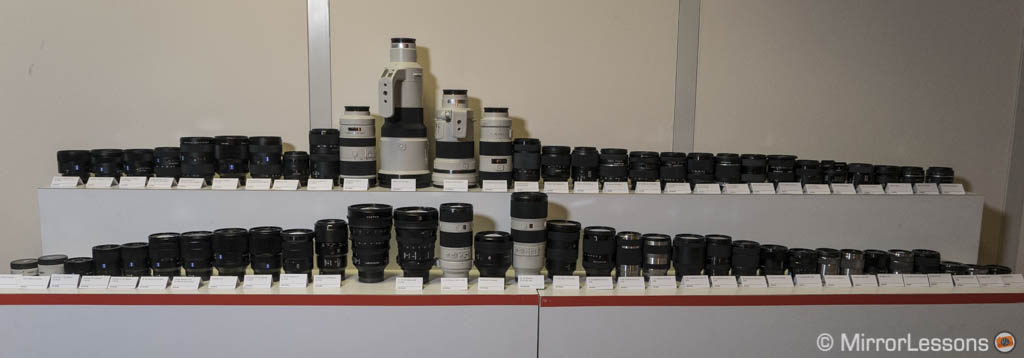
If we compare the current offerings for the Sony E-mount and A-mount, we see that the a99 II can benefit from long telephoto lenses such as the 300mm f/2.8 or 500mm f/4, which are also very expensive. Otherwise, both systems offer a variety of prime and zoom lenses.
3. Viewfinder and LCD monitor
Both cameras feature an 0.5-in type electronic viewfinder with 0.78x magnification and a 23mm eyepoint. The one on the a9 has more resolution (3686k vs 2360k dot OLED panel), Zeiss T* coating for better edge sharpness and the finder frame rate can be selected between 60fps and 120fps.

Moving to the rear monitor, the one on the a9 has more resolution (1440k vs 1288k dots). Then there is the angle mechanism. The one on the a9 can be tilted up (107°) or down (41°) while the LCD of the a99 mark II has a 3-axis tilting design. You can’t flip it to the side but you can rotate it 180° and lift it up 134° and down 180°.
The other key difference is that the LCD of the a9 is touch sensitive: you can use it to move the focus point when using the monitor or the EVF (AF pad) and is useful for both stills and video.
4. Sensor
The two cameras sport a 35mm format BSI sensor and the first difference is found in the resolution: the a9 has 24MP while the A99 II has 42MP.
The flagship mirrorless camera is the first full-frame product to feature a stacked sensor. Called Exmor RS, it is the latest evolution of a technology that Sony first introduced on its RX10 and RX100 series. Behind the back illuminated pixel panel there is an integral memory that – combined with a high speed processing circuit and the BIONZ X image engine – is capable of processing data 20 times faster than any other mirrorless full-frame camera. This gives the a9 some advantages in terms of speed as we will discuss later on.
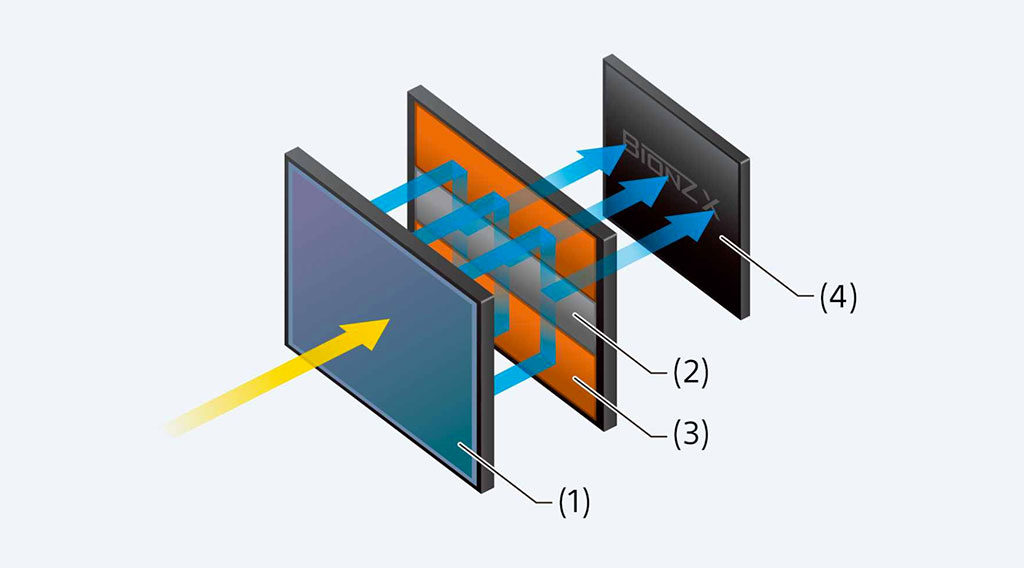
The a99 mark II inherits the sensor found on the A7r II. It has been referred to as the best full-frame sensor on the market. It uses a BSI pixel structure as well, and lacks the AA filter. Although the sensor structure is not as complex as the a9, the A-mount camera features a front-end LSI chip that boosts image data processing.
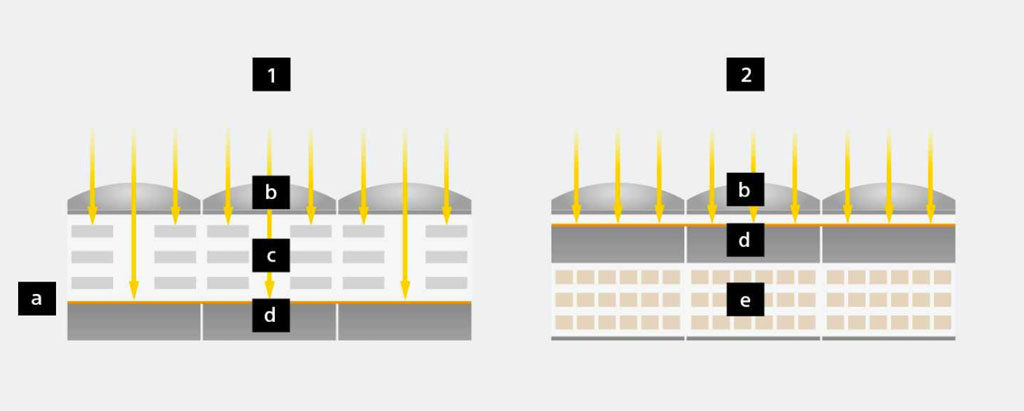
1) Conventional structure – 2) Back-illuminated structure
a) Light receiving surface – b) Gapless on-chip lens – c) Aluminium wiring layer – d) Photodiode substrate – e) Copper wiring layer
Concerning the ISO capabilities, the a9 has a native range of 100 to 51200 ISO. Extended values are available at 50, 102400 and 204800 ISO.
The a99 II has the same sensitivity as the A7r II which means a native range of 100-25600 ISO with extended 50, 51200 and 102400 ISO values.
5. Autofocus
The A9 features the most advanced hybrid AF system seen on Sony mirrorless cameras to date with 693 phase and 25 contrast detection points. The system can calculate at a speed of 60 times per second. The overall speed has been improved by over 25% in comparison to previous A7 cameras.

The a99 II has a more complex hybrid phase detection autofocus system. First there are the 399 phase points on the sensor itself that are used for vertical detection. Then like other DSLTs we have a second separate AF system with 79 points (15 of them are cross type) that work on horizontal detection.
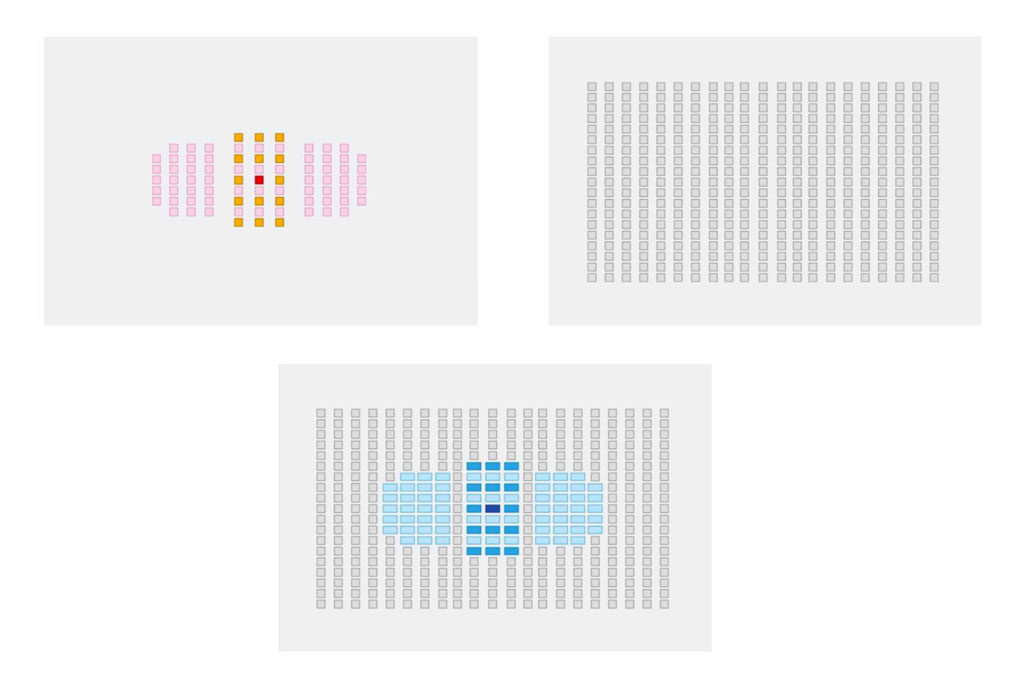
The 79 points of the AF sensor (yellows are cross type, red is f/2.8 sensitive), the 399 points on the image sensor and the two combined together.
The translucent mirror allows the light to reach the separate AF sensor and the image sensor simultaneously which means that the camera uses both phase-detection AF systems at the same time to optimise subject tracking. Furthermore the central AF point supports lenses as bright as f/2.8.
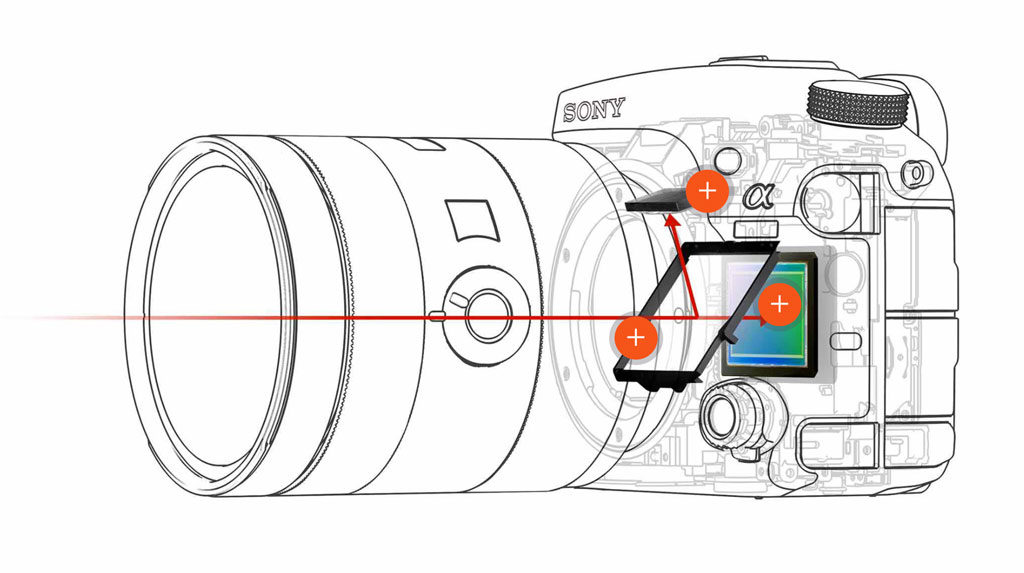
Concerning low light, the a99 II has an advantage with a minimum -4Ev sensitivity versus the -3Ev sensitivity of the a9.
6. Shutter speeds and electronic shutter
Both cameras feature a vertical-traverse focal-plane mechanical shutter with a maximum speed of 1/8000s. They also have in common an electronic first curtain option. The a99 II doesn’t have an electronic shutter option unlike its mirrorless sibling.
Thanks to its stacked sensor technology, the a9 is the first Sony mirrorless camera to expand the capabilities of the electronic shutter. Not only does it allow you to shoot in complete silence but it expands the maximum shutter speed up to 1/32000s. (Both cameras have a maximum speed of 1/8000s with the mechanical shutter.) It also allows the camera to shoot at an impressive rate of 20fps as we’ll see below.
Usually electronic shutters produce rolling shutter which involves vertical lines being distorted when panning fast or the subject itself being deformed if it moves very fast inside the frame. Sony claims that the new technology developed for the A9 is rolling shutter free. Given that some of the most important specifications of this camera rely on the electronic shutter, it is definitely one of the most important things to test in a real-life situation.
- Find out more about electronic shutters in our in-depth post.

7. Continuous shooting and buffer
As mentioned above, the a9 is capable of shooting at 20fps with AE and AF tracking thanks to its Exmor RS sensor. It does this by using the electronic shutter which also allows for a medium speed of 10fps. If you prefer to use the mechanical shutter, the speed goes down to 5fps.
The a99 II can’t reach 20fps but is capable of 12fps with continuous AF. Considering the higher megapixel count, the speed is nothing short of impressive.
Another advantage of the electronic shutter on the a9 is the absence of blackouts produced by the mechanical curtains. Furthermore the camera allows you to maintain a live view (EVF/LCD) with a refresh rate of 60fps while shooting in continuous mode, which means that there is no delay between what’s happening and what you are seeing. What’s more, the real time view remains clear of any blackout interference.
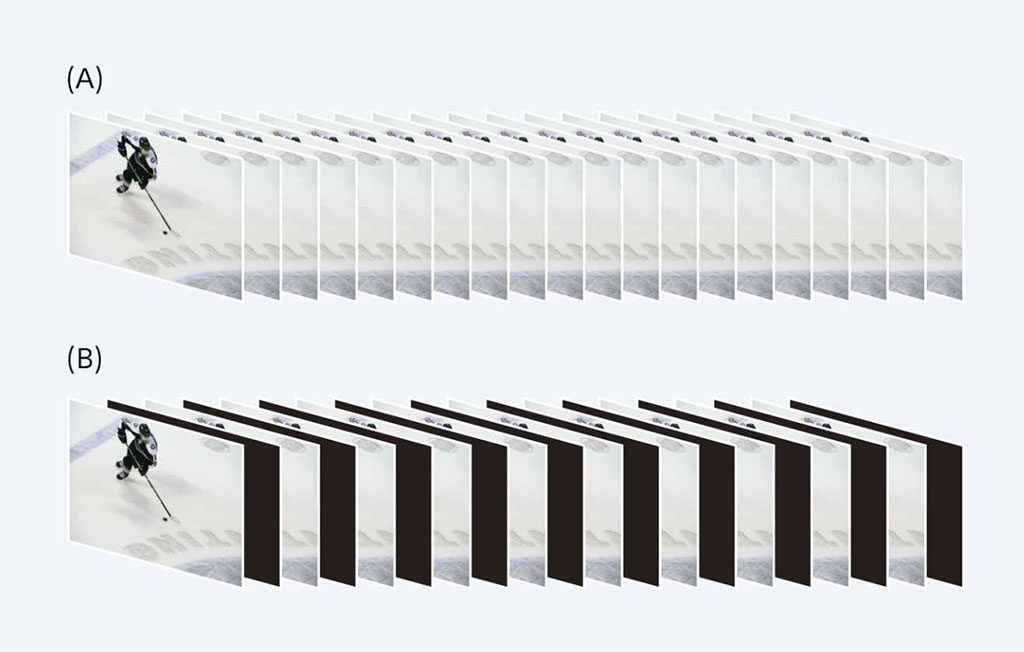
B) with electronic shutter
The a99 II allows you to keep a live view with short blackouts up to 8fps. At 12fps the last image taken is shown instead.
Concerning the buffer, the a9 once again takes advantage of its stacked memory for continuous recording up to 362 JPGs and 241 RAWs. The a99 II does 60 JPGs and 54 RAW files approximately by comparison but of course we mustn’t forget the higher resolution of the A-mount camera.
8. Video capabilities
Both cameras are capable of recording 4K video up to 30fps and 100mbps with full pixel readout but there are several differences in how they do this, as well as the options available.
The a9 records 4K without a sensor crop by using approximately 20MP on the sensor which is the equivalent of 6K. It then downscales the footage to 4K.
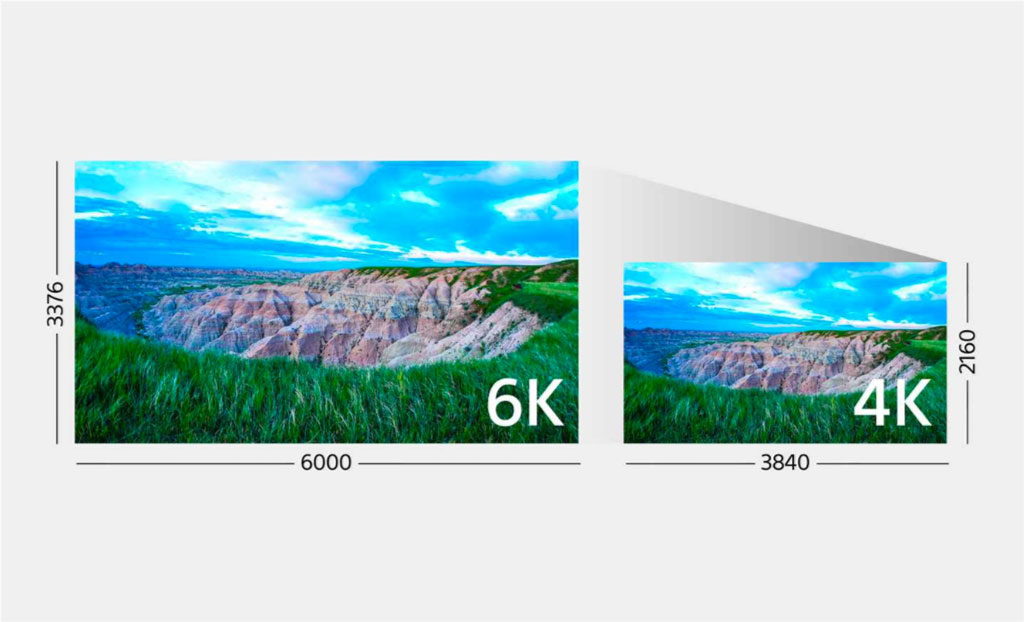
The a99 II records 4K without pixel binning in Super35/APS-C mode (1.5x sensor crop) where it uses 15MP and downscales to 4K resolution.

Both cameras feature the Slow and Quick motion mode that allows you to choose between 1fps and 120fps in 1080p. Here as well the a9 can do it without a sensor crop.
Finally the a99 II has the advantage of having picture profiles and S-log2 and S-log3 gamma curves unlike the a9.
9. Battery
Despite having a larger body, the a99 II battery has less capacity. The NP-FM500H has 1600mAh and can save up to 490 shots or record video for approximately 135 minutes (CIPA standards).
The a9 comes with a newly developed battery with 2280mAh. It can record up 650 images or 195 min of video footage.
Both cameras have an optional battery grip but only the a9 can be charged via USB.
10. Interface and wireless connections
Both cameras feature a microphone input, headphone output, micro USB, HDMI ports and a Sync terminal.
The A9 also sports a LAN/Ethernet connection while the a99 II has a DC power and remote control inputs.
Concerning the wireless capabilities, they share Wifi, NFC and Bluetooth (for geotagging) but the a99 II also has infrared for remote control.
Conclusion
The Sony a9 and a99 mark II are the flagship full-frame cameras for their respective systems: the E-mount and A-mount. They have both been designed with professionals in minds – particularly sports and wildlife photographers thanks to their advanced autofocus systems and fast continuous shooting speeds. There are, however, many differences that set them apart, starting with the price: the newest mirrorless camera can be found for $4500/£4500/€5300 while the a99 II is available at $3200/£3000/€3300.
Comparing the specifications and features of these two cameras is interesting because it also permits us to analyse Sony’s strategy. To me, it is clear that the brand sees mirrorless as the future. Even if the a99 II has very advanced capabilities, it is the a9 that they are pushing as a real competitor for the high-end DSLR market and sports photography. This doesn’t actually come as a surprise since Sony recently climbed to the #2 spot in the US in the full-frame market thanks to the success of the A7 series.
For now, Sony doesn’t want to kill off the A-mount system because doing so could potentially alienate customers who have already invested in the system. To release an A-mount flagship with all the most recent technology the brand has been developing over the past couple of years was justified. However, if you are new to the Sony world, it might make more sense to invest in the mirrorless system as the future is uncertain for DSLT cameras, especially now that they stand in direct competition with the E-mount products.
Check price of the Sony A9 on
Amazon | Amazon UK | B&H Photo | eBay
Check the price of the Sony A99 II on
Sony A9 comparison previews:
You may also be interested in:

